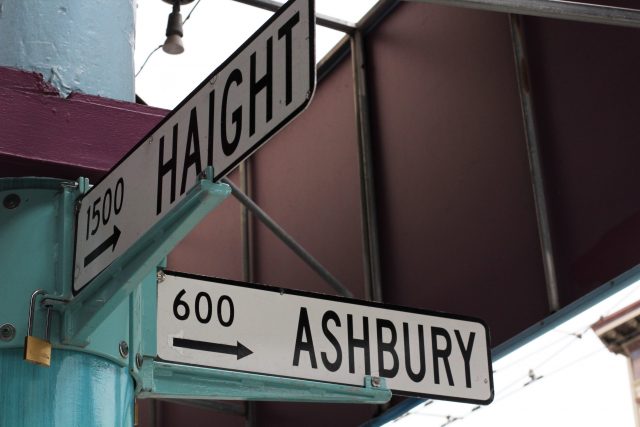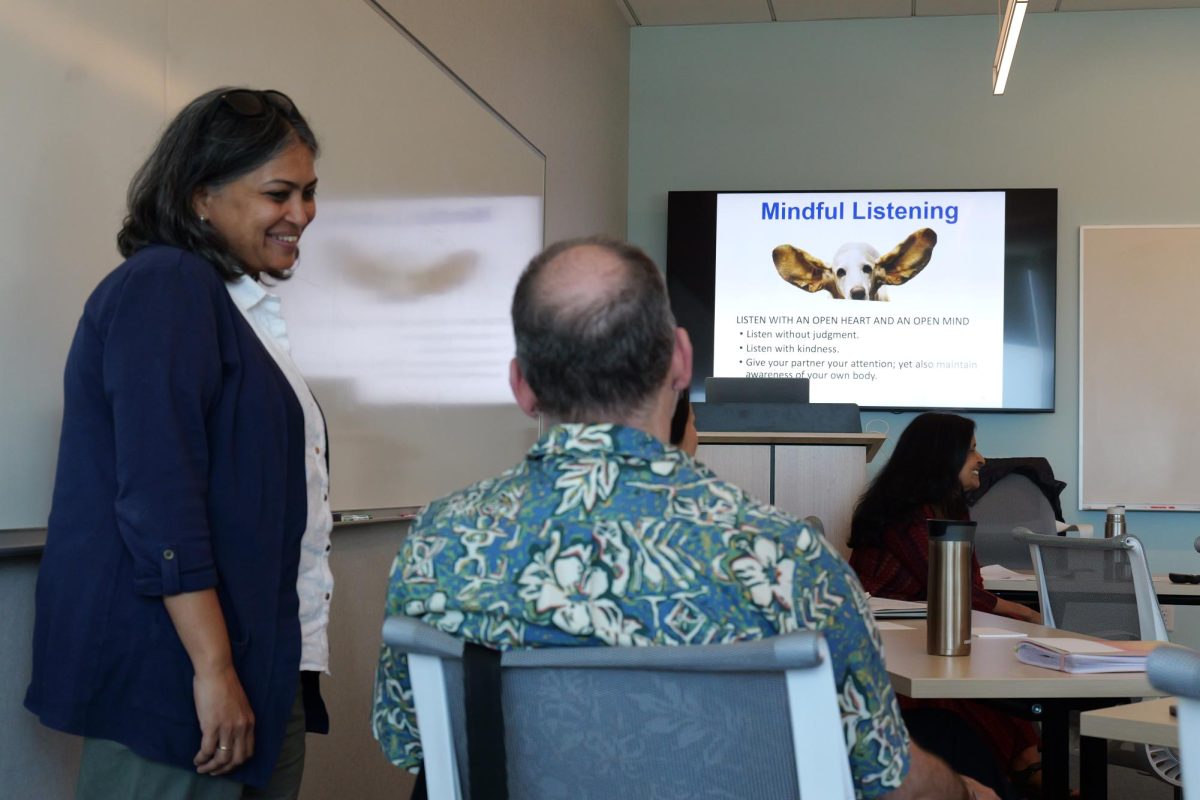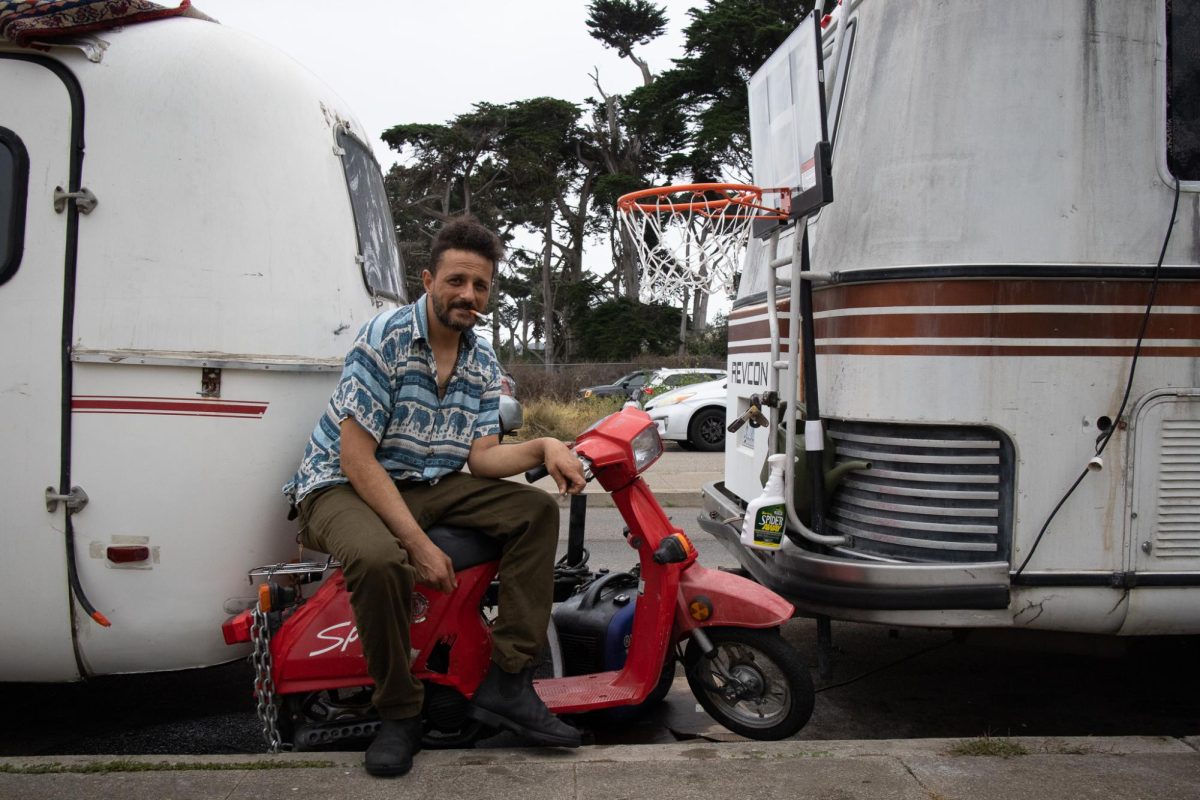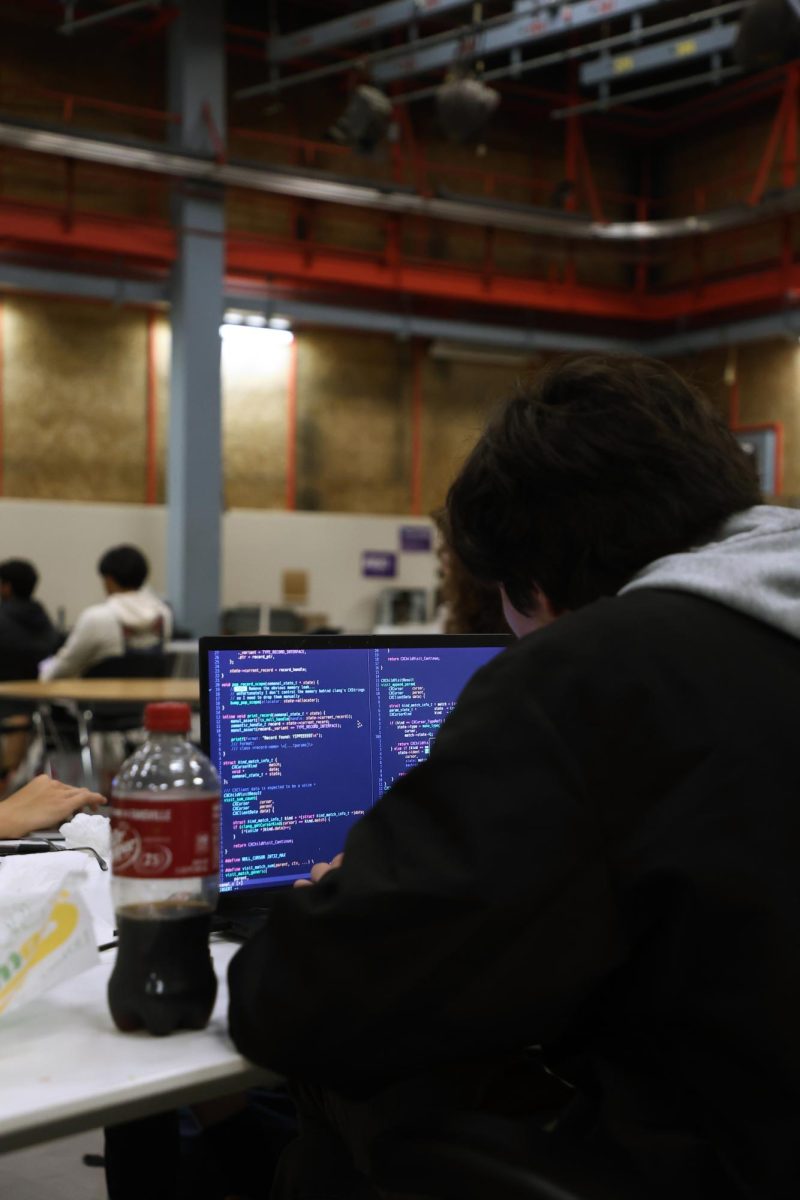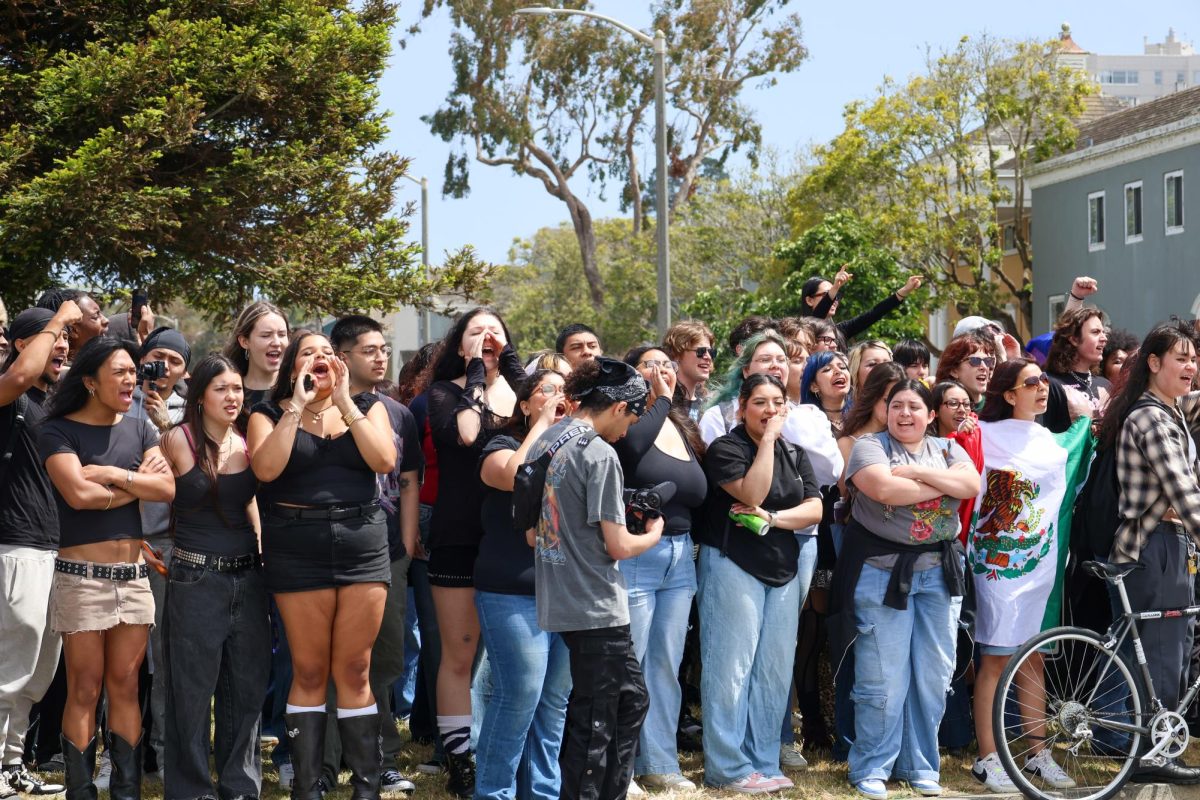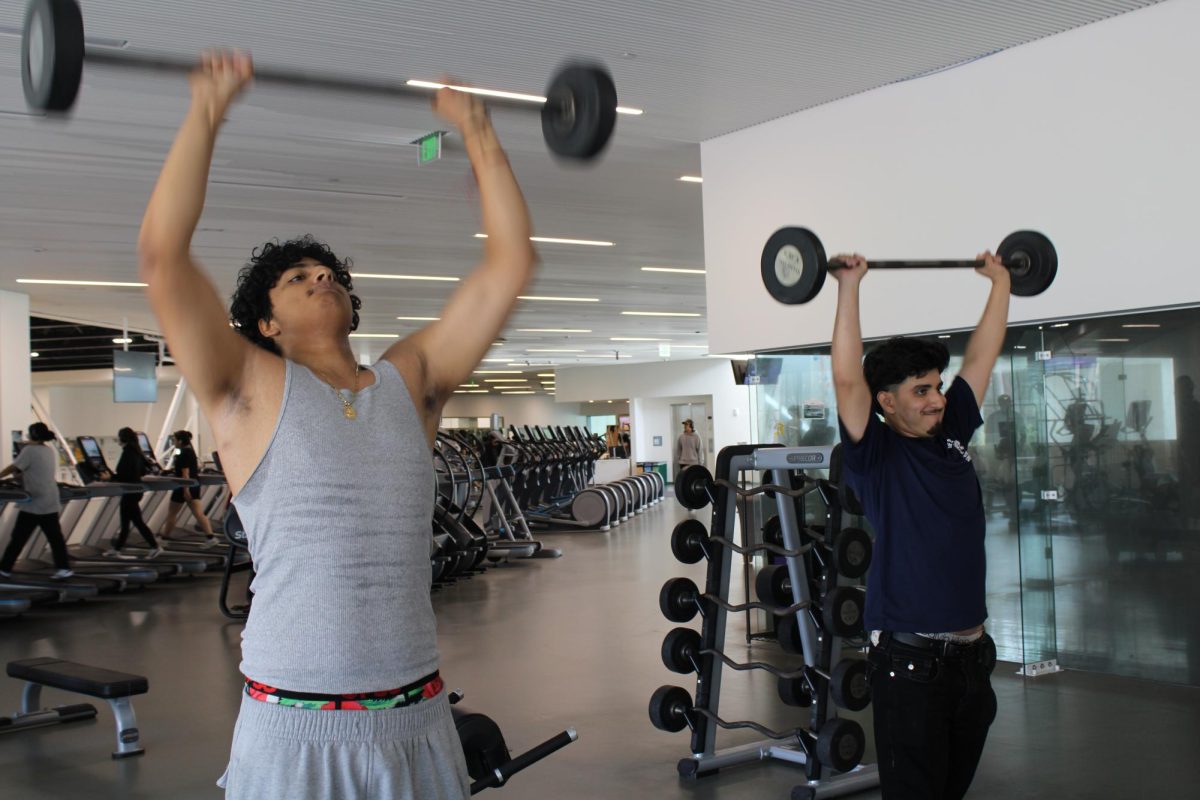Visitors peer in on colorful artifacts and psychedelic motifs, some stop to take selfies in a light show room where multi-colored waves splash against the walls, and some are dressed in their own throwback clothes, wearing colorful dresses and sky-high platforms. The “Summer of Love Experience: Art, Fashion and Rock & Roll” exhibit at the De Young museum brings the past to the present with its display of the era’s most memorable works of art, music, fashion, and everything else in between.
Fifty years ago hundreds of thousands of flower children gathered in San Francisco’s Golden Gate Park to listen to music, hang out, and spread the love, providing the rest of America with a glimpse into an alternative way of living. A half century later, American society is still dealing with the aftermath of the ideas, art forms, clothing, and music that emerged from that momentous 1967 summer in San Francisco. San Francisco is preparing to celebrate the anniversary of an event that shaped the city’s identity and left a lasting impact on pop culture.
“There was no one Summer of Love experience,” says Colleen Terry, curator of the non-textile pieces for the “Summer of Love Experience” exhibit on display through August 20. “I think that’s something I certainly experienced in my research is that people living a block apart from one another could have had very different experiences here in San Francisco in 1967.”
While the circumstances of the Summer of Love were the start of a new way of thinking for the rest of the country, the counterculture’s Summer of Love was actually the end of what had started as a movement in the mid 1960s.
The start of the countercultural movement began with Ken Kesey’s and the Merry Pranksters’ “Acid Tests”, or parties where guests were encouraged to use LSD and expore the drug’s psychedelic effects. Then in January 1967, the intellectual and radical political activists of Berkeley combined with the social and cultural experimenters of the Haight-Ashbury for the Human Be-In to join forces against the war in Vietnam and to experiment with drugs and new forms of philosophy, art, and music.
This occasion gained national media attention and young people to flocked to San Francisco, this migration culminated in the what we now know as the Summer of Love. Terry hopes that the DeYoung’s exhibit will highlight the extent of the counterculture movement in San Francisco during that time period.
“I think what a lot of people know is sex, drugs, and rock and roll and I think this show actually shows that there is a lot more to it especially in an aesthetic dimension that has really permeated our popular culture even today.”
One of these aesthetic elements was the explosion of color and bell bottoms in the clothing that accompanied the movement.
“There were certain things that just kept coming up,” says Jill D’alessandro, textile curator for the exhibit. “Victoriana, old timey dress, native american dress, the interest in the Pacific Rim, in Asian cultures. There’s also psychedelia and the swirling motifs in prints, handwork, and denim.”
Denim played a large part in many of the styles from this time period and that may have been due to Levis’ close relationship to the city and its residents mentions D’alessandro. “Levi’s had their finger on the pulse of the counterculture,” says D’alessandro, “and actually was like a nurturing parent to the counterculture, looking at what they wanted and providing it for them and making sure to keep their jeans at a low price.”
One person whose clothes are featured in the exhibit are Wavy Gravy’s, an entertainer, comedian, and official clown of the Grateful Dead. Gravy was a prominent figure in the counterculture, or as he calls it “the under the counter culture.” He joined the Merry Pranksters in the Acid Tests and later drove around the country in a painted school bus.
“The seats were all taken out and along the sides were benches that opened up at night into double beds with the storage under the bench so it was like just living in a sailboat,” Gravy remembers. “You had to knock down everything you had to a very minimal amount of stuff and it was very synchronicity building.”
They used the attention they began receiving to highlight issues important to the subculture like Animal and environmental rights.
“We traveled on a bus that was taken on a freighter to Sweden for the United Nations conference on human environment where we actually turned the bus into a whale and drove into downtown Stockholm during rush hour and got the UN to pass the resolution against the killing and hunting of the grey whale,” remarks Gravy.
The counterculture movement that spurred the Summer of Love was also known for it’s political activism and the birth of many social movements such as the environmental movement, the women’s movement, and the anti-war movement. One social issue that has a complex relationship with the counterculture movement is the gay rights movement.
“We think of the gay movement as a political movement, but really it was always a social and cultural movement,” says curator of the “Lavender Tinted Glasses: A Groovy Gay Look at the Summer of Love” exhibit Joey Cain.
The exhibit is a “look at the LGB folks who were significant in the summer of love in 1967 and I look at Allen Ginsberg, the poet, and the underground, avant-garde filmmaker Kenneth Anger, Janis Joplin, and someone who most people don’t know astrologer, philosopher Gavin Arthur,” says Cain. “I give a little bit of history about their background and what their involvement was in 1967 and I look a little bit also at how what was happening then influenced the homophile community that existed at the time.”
While the summer of love is associated with “free love”, the movement wasn’t as accepting as it might seem at first glance.
“The Summer of Love stuff tended to have very old gender role ideas. The women were to make babies and take care of the home and be nurturing and the men were to be out there fighting on the barricades. While there were a lot of gay people around in it, it was not something that people really talked about,” Cain explains.
He does acknowledge, though, that the summer of love did have a significant impact on the LGBT community’s sense of self.
“Where it influenced the LGBT community heavily was there was a great emphasis placed on personal authenticity that instead of being who your parents want you to be, who your teachers want you to be, who the society in general wants you to be, you need to understand who you are and be that person,” Cain says. “That was a huge part of what was being promoted and talked about and encouraged in the summer of love. And that has always been the bottom line of coming out.”
Personal authenticity, sexual freedom, and drug use were factors that influenced the LGBT community as Cain mentions with a laugh, “It’s really hard to stay in the closet while you’re on LSD.”
Cain points out that what many remember as a summer of kindness and sharing also included many struggles with the police.
“If not every weekend, every other weekend, the police would come in and there would be mini riots here in the Haight with the police trying to clear people out and trying to control them,” Cain says. “Imagine a hundred thousand refugees flooding into a neighborhood, mostly made up of people between the ages of 13-23 who couldn’t take care of themselves. It was a disaster zone and part of the thing that destroyed it was media exploitation around what was going on in the neighborhood. It had this double edged effect in that it took the ideas that were being worked on here and sent them out across the country. But it also made everybody want to run away from home and come to San Francisco.”
At the time, much of the mainstream media framed the movement as a “cute” social movement, instead of examining the very real issues that young people were talking and protesting about.
“It wasn’t just peace and love. There were attempts to address really deep seated social issues like racism, poverty, class inequality. That gets glossed over in the tie dye and beads concept of the summer of love,” Cain explains.
One commemorative celebration this summer hoping to examine these issues is an Academic Conference on the Summer of Love that will take place this July from NorthWestern University. The conference will feature talks and panels from professors around the Bay Area, including Peter Richardson and Steve Savage from SF State, to present their research about the Summer of Love.
“I’m doing the conference for students today to figure out what the right kind of framework is to understand those events fifty years ago, so that the meaning of them is powerful to young people today,” says NorthWestern University Professor and head of the Summer of Love Academic Conference Planning Committee.
The conference is free for any grad students attending a university in the Bay Area. The conference will feature information about the role of cyberculture in the counterculture movement, women’s roles, the Black Panther Party, drugs, and “social theorists whose work on critiques of American Society provided young people with a framework for critiquing American society and looking for an alternative to it,” says Lewis.
While there were many counter cultural movements taking place around the world that year, “they especially converged in San Francisco because it was a more open kind of society and had a long tradition of welcoming offbeat people to it being a beautiful place to live for artists, musicians, and poets,” explains Lewis, who also mentions that San Francisco’s original founding was during the Gold Rush of 1849.
“San Francisco had this unique quality of lots of new people coming there, lots of people trying to find a way to live together, and lots of them pursuing a dream. That’s built into the DNA of the city,” Lewis says.
For Boots Hughston, his dream is to honor the original summer of love by throwing a commemoration festival this summer, featuring many of the same speakers and musicians that were present at the first one. Hughston attended the original summer of love as a teenager.
“It was like everybody woke up all at the same time,” he says of the celebration.
Hughston has put on other commemorative anniversaries for the Summer of Love, but has had trouble getting permits for this anniversary occasion.
“At fifty years, we’re passing it on, this is our last hurrah. We’re all in our 60s, 70s, 80s. There won’t be many of us around for the next 10 year anniversary. We’re passing it on whether we like it or not,” Hughston says.
He was denied a permit for his original plan of having the event in Golden Gate Park in June or July by the San Francisco Parks and Rec Department. Despite the negative response of the city, Hughston is continuing to apply for a September or October event.
“I hope it doesn’t go back to the same hassle we just had that’s what I’m worried about it. So I took myself out of it I didn’t apply for this permit I took myself out of the loop and I passed on to Sunshine Powers. She’s applying for the permits now. So we’re pretty much ready to rock,” he said.
Hughston has been frustrated by the amount of money required now to put on an event in the city. He mentions that when he was young, it was only $150 for a permit, but now to put on a large affair, costs will total around $450,000-$500,000.
“It’s almost impossible for a young person to go out there and try to do a large free event,” Hughston sighs, “The summer of love 50th anniversary is free. The reason why it’s free is because we want anybody to be able to come. Anybody who can come whoever wants to come.”
It was also very important for Hughston that the celebration take place where it all started: Golden Gate Park.
“It started here, it needs to be represented here. It’s a humanity movement too. It’s not a money movement or about egos or anything, it’s basically a spiritual movement that started right here in San Francisco,” Hughston says.
Parks and Rec official Joey Kahn worries that the event’s big scale might be a danger to all those attending, “As the agency responsible for stewarding and permitting San Francisco’s parks, it is our responsibility to ensure that events are safe for the public to attend. That means making sure there is an adequate emergency/medical plan, proper infrastructure to support the number of people expected, adequate transportation and public safety staff, including Police and Park Rangers on-site to respond to an emergency. While it is not sexy, it is incredibly important that all these elements be in place. Without them, the results can be catastrophic.The multiple city agencies involved in signing off on this permit agree that, as a result of Mr. Hughston’s repeated misrepresentations, he could not be entrusted to ensure public safety and limit damage to the park. Despite our many attempts to work collaboratively with Mr. Hughston, and the multiple chances he was given to rectify the situation, he continued to falsify his responses.”
Hughston continues to claim that he completed everything required of him and in a timely manner. Though Hughston’s dreamt up event might not come true, some San Francisco organizations are already helping to commemorate the anniversary with the combination of Sunday Streets and It’s Your District to create a themed Summer of Love for Sunday Street events this summer.
“We want to celebrate what is special in each neighborhood and remind people why they love San Francisco,” says Liz De Nola, the director of operations for It’s Your District, which promotes non profits in San Francisco. “We want to highlight the values that emerged from the summer of love. To us, that means community building and creativity and so at each event we have lots of music, we have art, we we have giant puppets and stilt walking, and lots of entertainment for the whole family.”
Executive director for It’s Your District, Yves-Langston Barthaurd, wants to showcase the great organizations and groups working in various San Francisco neighborhoods, “A lot of these organizations that we feature are in the neighborhood and a lot of people don’t realize that they’re there,” she says.
Barthaurd also thinks that this nod back to the original summer of love couldn’t be more timely.
“This year, we’re seeing more people out on the streets and protesting and wanting their rights and their voices to be heard than in years past, basically since 1967,” Barthaurd says. “We’re in another era where people feel like their voices aren’t being heard and that they need to get out on the streets and really push the narrative into the direction that they want to see.”
Michele Rebelle, sixty-three, was a teenager back when she attended the original summer of love.
“Back then, we were all politically motivated. I have burned my bra marching down Market Street pushing a fucking baby carriage to make sure that my daughters and my grand daughters have reproductive rights,” she says passionately with tears streaming down her eyes. “Everything that we fought for then we have to re-fight for again and we’re fucking old. We need our kids and our kid’s kids and all these little motherfuckers out here to step up, not by violence, but by words and thoughts and action.”
Free, 25, is homeless by choice and made the journey to San Francisco from Illinois in hopes of reaching the acceptance he heard was prevalent here.
“I came here from a small farm town that was super racist and bigoted,” he says. “I’m part of the LGBT community and it’s way more accepting out here. When I became homeless I found my way to the Haight and the hippie guys really took care of me and showed me the ways.”
The legacy of Haight Street as a gathering of hippies, still attracts many people, including the homeless.
“I think that the homeless situation and the drug situation that we’re seeing in San Francisco is worse than I’ve ever seen it for the decade that I’ve lived here,” says Malaika Clarke, the art director and sales rep for the costume store P-Kok on Haight Street. “Something that I think the city really needs to do before they summer comes is have more public restrooms for the general public and for the homeless population that lives here,” she says.
Clarke has always felt connected to the counterculture movement that took place here in 1967, even though she was not part of it.
“I feel like 1967 really laid a stamp on Haight Street and kind of set this ripple out through the universe of what the hippie movement was,” she says. “I kind of feel the ghosts of Haight Street a lot.”
For Clarke, keeping the spirit of community alive is a great way to honor the movement, “Here at P-kok we’re trying to support local artists I have a lot of my paintings in here and I’m going to be doing a series for the Summer of Love. We’re going to be throwing different events, hopefully making some music videos, we have different street artists who are going to be painting on the front of our window display and our shop and we’re also going to be involved with some of the other vendors on the block just doing street parties and stuff,” she says.
Right before the interview with Clarke, a large fight between two men broke out in front of the store. The men appeared to be on drugs or mentally unstable. Many people stood watching and filming on their phones, until it eventually ended and the men went their separate ways. This instance only solidified Clarke’s passion for protecting her community.
“We just heard a huge fight happening out on the street and I found myself starting to videotape it and I then I said well what am I doing, I’m going to go try to break it up,” Clarke says. “And I didn’t even have anybody to watch the store, I just asked a stranger to watch the store for me. I mean we all have to take initiative and responsibility each and every one of us to be a part of the community. I think that what happens when you get so many people who are coming through the city and not staying or a techie who maybe will be here for like a year and doesn’t really get invested, you don’t get that community. So I would say wherever you go, be invested and help out. It’s up to each and every one of us to deeply look inside ourselves and ask how can we be the love.”


